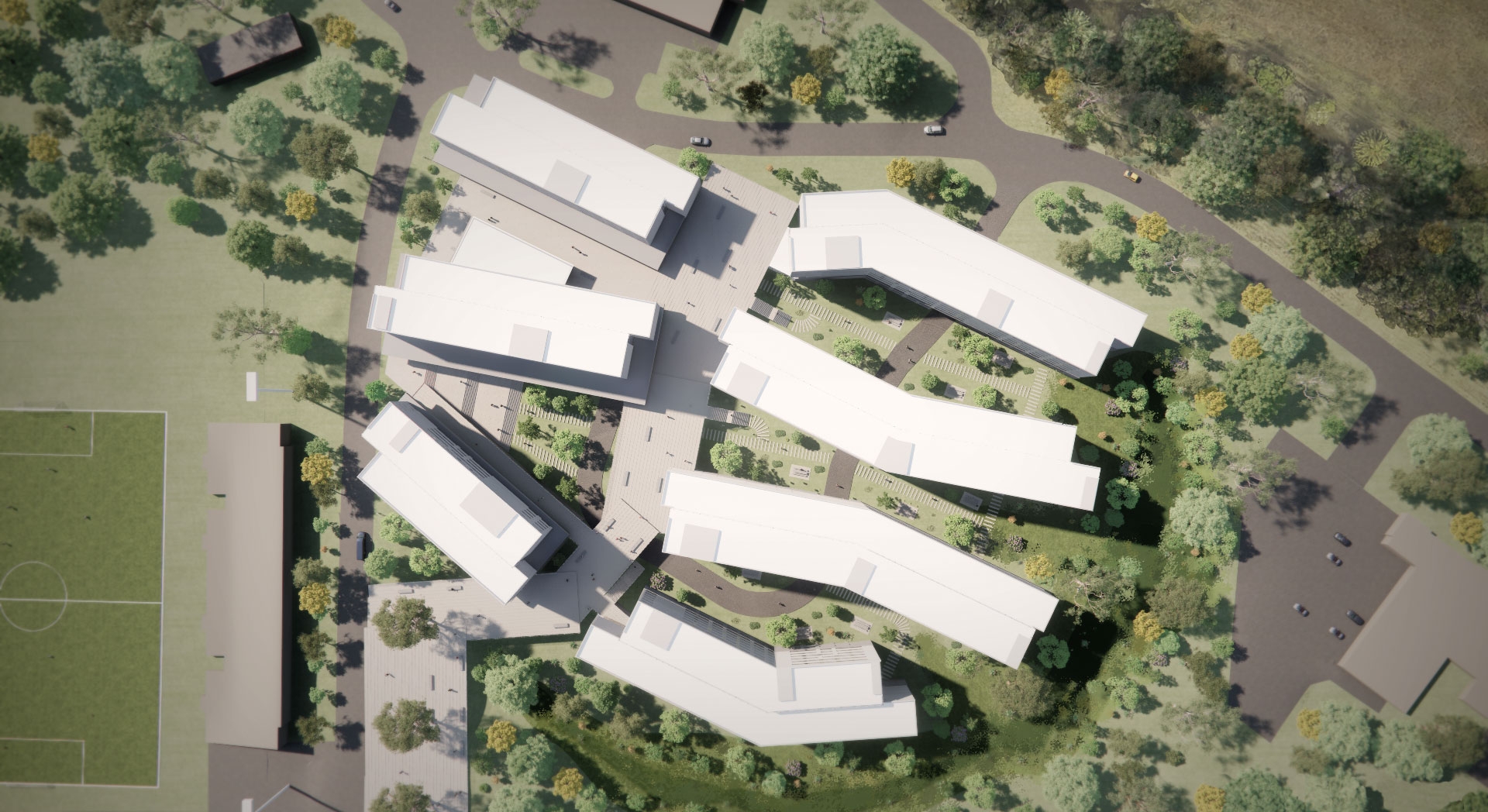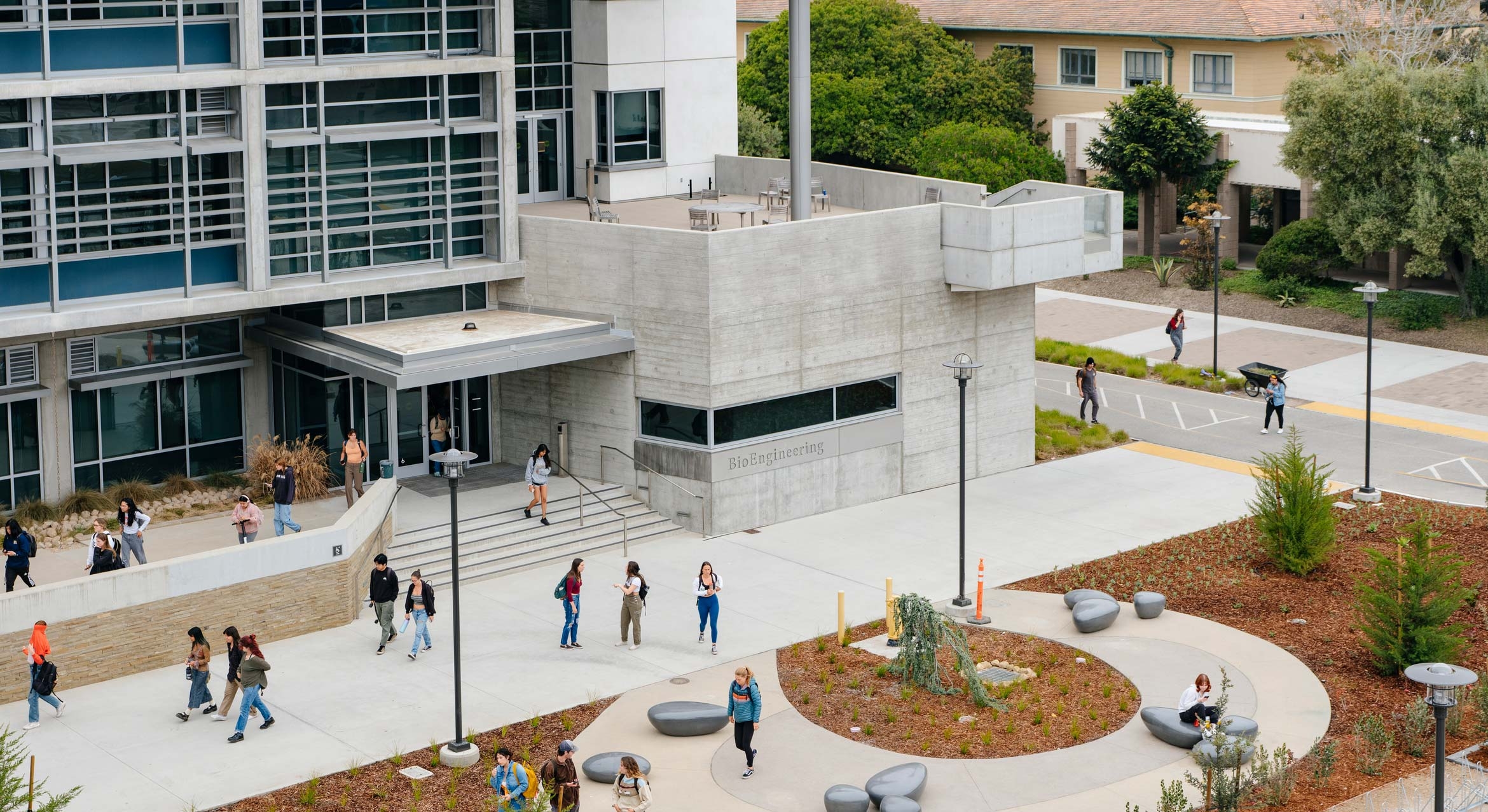
Student housing lawsuits settled in new agreements between UC Santa Barbara, Goleta and Santa Barbara County
Mutually committed to moving forward for the benefit of the entire community, UC Santa Barbara, in partnership with the County of Santa Barbara and the City of Goleta, has agreed to resolve two lawsuits over a 2010 agreement between the three jurisdictions concerning the construction of on-campus housing for students.
The three entities jointly announced the new settlements.
“As a university, we have always maintained collegial relationships with the city and the county and that is always the goal and a priority,” said Chuck Haines, UC Santa Barbara’s vice chancellor and chief financial officer. “We look at these settlement dollars as an investment in our community and an investment in maintaining our positive relationships with city and county. These settlements will bring about mutually agreeable capital improvements that either the city or the county will make, but that our UC Santa Barbara students, our campus population, also will benefit from.”
Under the settlements, the university will make one-time payments to the county and the city of $3.7 million and $2.3 million, respectively; the funds will be used for projects intended to serve both the campus and local communities. UCSB agreed to move forward with construction of an additional 3,500 on-campus student beds; the planning and design for the first phase is currently well underway. UCSB also agreed to pay each jurisdiction $500 per student if enrollment exceeds 25,500 while the 2010 LRDP is in effect. In return, the county and the city will waive and release housing and enrollment-related claims under the 2010 agreement, commit not to challenge future campus housing projects to add the 3,500 student beds, and agree to dismiss their pending lawsuits.
“Affordable housing is the most vexing challenge facing our county. This agreement acknowledges that UCSB’s struggles in meeting the needs of its campus community have had a cascading impact on us all. We have forged a new chapter in actually delivering university housing and addressing impacts in Isla Vista — the home of one of the largest mass evictions in our history,” said Second District Supervisor Laura Capps, whose district includes the community of Isla Vista neighboring the UCSB campus, in a statement issued by the county when the agreements were announced. “With the deadlines outlined in the agreement, as well as commensurate penalties for not meeting outlined targets, I am confident the University will work to aggressively advance their housing plans, mitigate long standing impacts and be good neighbors. We look forward to continuing to partner with the university and ensure that needs of our shared constituency, the students, faculty and staff, and the surrounding community, are addressed proactively.”
The lawsuits filed by the city and county asserted that UCSB breached the 2010 agreement by increasing enrollment in excess of the number of net new student beds by more than 1,000 students. While the campus did not disagree that enrollment, defined as the average number of students attending classes on campus, had outpaced new beds, it disagreed that the shortfall in beds resulted in any damage to either the city or the county. Indeed, the majority of the enrollment increases at issue were absorbed on-campus by transitioning existing on-campus housing units from double- to triple-occupancy.
UCSB enrollment increased much faster than anticipated in the 2010 LRDP in response to systemwide enrollment growth negotiated by the California State Legislature and the UC Office of the President in 2015-16, significantly impacting UCSB’s ability to meet its targets for new student beds. Following the Coastal Commission’s approval of the LRDP in 2014, when campus housing projects could finally commence, the campus quickly added over 1,500 new beds by building the Sierra and San Joaquin housing developments in 2016-17. However, the campus was not able to construct enough housing to keep pace with the unanticipated increases in enrollment.
This academic year the campus offered housing contracts to everyone on its application list, and new students moved into housing for the winter quarter. At the beginning of the winter quarter, the university had 256 available beds in undergraduate residence halls, 94 open beds in undergraduate apartments and 18 in San Clemente graduate housing. There also were community housing vacancies in Goleta, Santa Barbara and Isla Vista.
The campus is rapidly advancing on development plans announced last year to construct the housing identified in the new agreements. The first phase of the two-part project to construct 3,500 student beds, San Benito, includes 2,100 new student beds and is expected to be ready for occupancy by the fall of 2027; an additional 1,400 beds are projected to be completed by 2029.
San Benito is proposed for a roughly 5-acre site between Mesa Road and Stadium Road, the former location of UCSB’s Facilities Management division and Transportation and Parking Services. Preliminary conceptual drawings serve to illustrate the location’s potential: multistory buildings, with mountain views from one side and a sightline to the ocean on the other, connected by a central promenade and plaza. Envisioned as mostly four-bedroom apartments with a mix of some doubles and singles, San Benito is also planned to feature amenities such as a market and café, study and game rooms, recreational spaces and both bike and pedestrian pathways connecting the site to the campus as a whole.
Meanwhile, work is ongoing by the City of Goleta and the County of Santa Barbara to identify community projects to be funded by the university — and to benefit UCSB and its students as well as the surrounding communities — as a result of the new agreements.
Overall, the university annually contributes more than $2 billion in direct and indirect economic impact to the county and the local communities. UCSB has a history of funding community projects both in the county and in Goleta, including improvements to Storke and Los Carneros Roads, fences along the bluffs in Isla Vista on county land, and street lights, sidewalks and other safety improvements in Isla Vista. UC Santa Barbara also provides the IV Community Services District with $200,000 per year for community improvement projects and contributes an additional $2 million every year for fire and policing services in Isla Vista.
“Any investment in capital projects that benefit the city, the county, and UC Santa Barbara are a good use of our resources — a better use of resources than legal costs,” said Haines. “These settlements put that chapter behind us. We’re making mutually agreeable investments and focusing on the collegial relationship we’ve always enjoyed. We are a committed member of this community.”
Kiki Reyes
Media Relations Manager
(805) 893-2191
kikireyes@ucsb.edu



